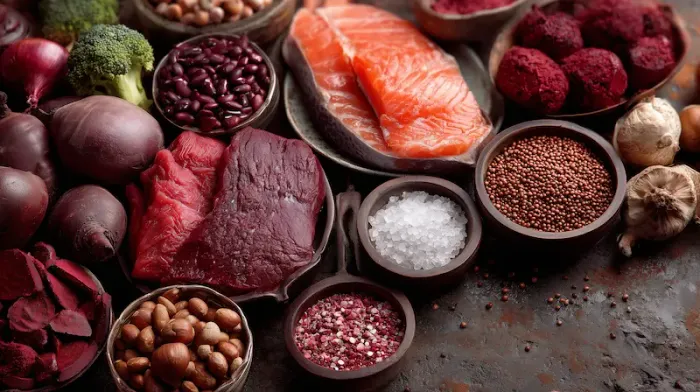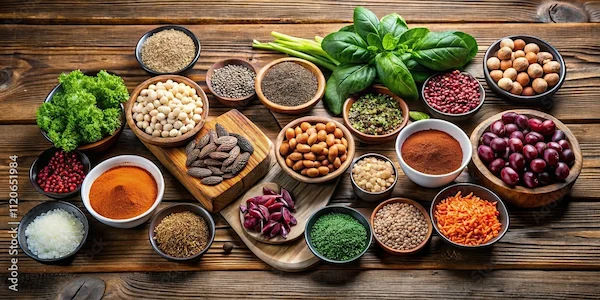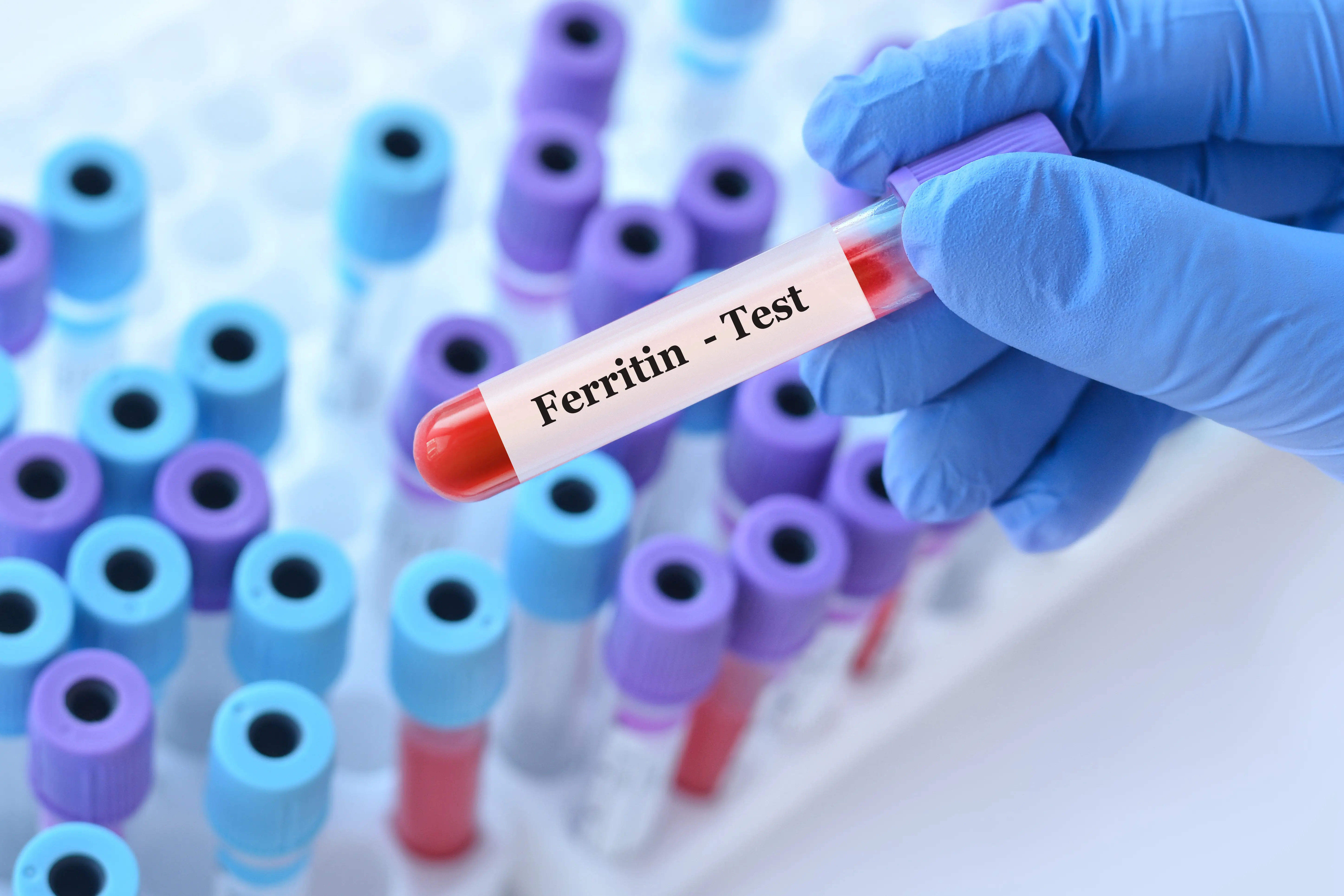10 Iron-Rich Foods That Help Fight Anaemia Naturally
Discover 10 proven foods for anaemia and how to build an iron-rich diet. Learn heme vs non-heme, absorption tips, meal ideas, and FAQs.

Written by Dr. Mohammed Kamran
Reviewed by Dr. Shaik Abdul Kalam MD (Physician)
Last updated on 18th Nov, 2025

Introduction: Why Iron Matters if You’re Dealing with Anaemia
Anaemia is widespread across the globe, and iron deficiency remains its most common cause. When your body lacks sufficient iron, it cannot produce enough healthy red blood cells to transport oxygen efficiently. As a result, you may feel tired, dizzy, short of breath, or appear pale. The encouraging news is that incorporating the right foods for anaemia into your daily meals can help replenish your iron stores—especially when you combine these foods thoughtfully as part of an iron-rich diet.
However, food alone may not be enough for everyone. Some people require iron supplements or medical treatment for other underlying causes of anaemia. For that reason, always work with a healthcare professional for testing, diagnosis, and personalised guidance. Whether you are preventing iron deficiency or supporting medical therapy, the foods and tips below can help you make meaningful progress towards better energy and well-being.Consult a Top Nutritionist for Personalised Advice
Iron: What to Know Before You Fill Your Plate
The tips for iron consumption include:
• Two types of dietary iron:
o Heme iron (animal sources): Found in red meat, poultry, and seafood. It is more readily absorbed by the body.
o Non-heme iron (plant and fortified foods): Found in beans, lentils, tofu, leafy greens, nuts, seeds, and fortified grains. Absorption is lower but can be improved.
• Vitamin C helps: Pair iron-rich foods with vitamin C sources such as citrus fruits, strawberries, kiwi, peppers, or tomatoes to enhance absorption.
• Some things block absorption: Tea, coffee, calcium-rich foods, and phytates (in some grains and legumes) can reduce iron uptake. Try to consume tea, coffee, and calcium a few hours away from your main iron-rich meal.
• Daily iron needs:
o Most adult men and women over 51: around 8 mg/day
o Women aged 19–50: around 18 mg/day
o Pregnancy: around 27 mg/day
Always check with your clinician for individual recommendations and testing (such as haemoglobin and ferritin levels) to assess your iron status.
10 Iron-Rich Foods That Help Fight Anaemia Naturally
1) Lean Red Meat (Beef)
Why it helps: Beef supplies heme iron, which is easily absorbed. Choosing lean cuts such as sirloin or round helps limit saturated fat while boosting iron intake.
Tips to use:
• Add lean minced beef to chilli with kidney beans and tomatoes for an extra vitamin C lift.
• Slice steak over a spinach and citrus salad.
2) Liver and Other Organ Meats
Why it helps: Organ meats like beef or chicken liver are exceptionally rich in iron, making them potent options for increasing iron levels.
Note: Liver contains high amounts of vitamin A. During pregnancy, excess vitamin A may be unsafe, so consult your clinician before including liver.
Tips to use:
• Sauté chicken livers with onions and peppers.
• Blend a small portion into sauces to add iron subtly.
3) Poultry (Especially Dark Meat)
Why it helps: Chicken and turkey provide heme iron, with dark meat offering slightly more than white.
Tips to use:
• Roast chicken thighs with lemon and herbs.
• Prepare turkey chilli with tomatoes, beans, and peppers.
4) Oysters, Clams, and Mussels
Why it helps: Shellfish are among the richest natural sources of heme iron. They also provide zinc and vitamin B12, both essential for red blood cell health.
Tips to use:
• Enjoy steamed clams in a tomato broth.
• Add canned clams to pasta with spinach and garlic.
Note: Always choose fully cooked shellfish to reduce foodborne illness risk.
5) Sardines and Other Canned Fish
Why it helps: Sardines, tuna, and salmon offer heme iron along with protein and omega-3 fatty acids. They are affordable, convenient, and shelf-stable.
Tips to use:
• Mash sardines with lemon, capers, and parsley for a simple spread.
• Make tuna salad with chopped peppers for a vitamin C boost.
6) Beans and Lentils
Why it helps: Beans (kidney, black, pinto, chickpeas) and lentils supply non-heme iron, fibre, and plant protein. Cooking or soaking helps reduce compounds that inhibit iron absorption.
Tips to use:
• Cook lentil soup with tomatoes and leafy greens.
• Combine chickpeas, lemon juice, tomatoes, and herbs for a refreshing salad.
7) Tofu and Tempeh
Why it helps: Both are soy-based plant proteins rich in non-heme iron. They readily absorb flavours from sauces and marinades.
Tips to use:
• Stir-fry tofu with broccoli, peppers, and a dash of orange juice.
• Add tempeh to tacos topped with cabbage slaw and salsa.
8) Dark Leafy Greens (Spinach, Kale, Swiss Chard)
Why it helps: Leafy greens provide non-heme iron and folate, a nutrient vital for forming healthy red blood cells. Pairing with vitamin C-rich foods enhances absorption.
Tips to use:
• Sauté spinach with garlic and lemon juice.
• Create kale salads with oranges, strawberries, or tomatoes.
9) Iron-Fortified Breakfast Cereals and Oatmeal
Why it helps: Many cereals and oats are fortified with iron, helping you meet daily needs—especially if you eat little meat.
Tips to use:
• Choose a fortified cereal topped with strawberries or kiwi.
• Cook oatmeal with raisins and serve with citrus fruit.
10) Pumpkin Seeds, Sesame Seeds (Tahini), and Cashews
Why it helps: Seeds and nuts add non-heme iron, healthy fats, and minerals. They are easy, nutritious snacks.
Tips to use:
• Sprinkle pumpkin seeds over yoghurt or salads.
• Mix tahini with lemon juice for an iron-rich dressing.
• Snack on a handful of cashews with a clementine.
How to Build an Iron-Rich Diet: Simple, Tasty Meal Ideas
The daily ideas, as per meal time, include:
Breakfast
• Iron-fortified cereal with strawberries or oatmeal with raisins and orange slices.
• Wholegrain toast with tahini and honey plus a kiwi or a small glass of orange juice.
Lunch
• Lentil and tomato soup with kale salad and lemon dressing.
• Tuna and white bean salad with peppers and parsley, served with wholegrain crackers.
Dinner
• Turkey chilli with kidney beans and tomatoes, topped with fresh coriander and lime.
• Stir-fried tofu with broccoli, peppers, and snap peas over quinoa, finished with lime juice.
• Grilled lean steak over spinach with a citrus vinaigrette.
Snacks
Pumpkin seeds with a clementine.
• Hummus with red pepper strips.
• Sardine pâté on wholegrain toast with tomato slices.
Smart Absorption Tips for Better Results
Absorption tips for better results include:
• Add vitamin C: Combine iron-rich foods with citrus, berries, kiwi, tomatoes, or peppers.
• Time your beverages: Drink tea or coffee at least 1–2 hours before or after iron-rich meals.
• Separate calcium: Take calcium supplements or dairy at different times from main iron meals.
• Cook creatively: Using cast-iron cookware can slightly increase iron content, especially with acidic dishes such as tomato sauces.
When to See a Healthcare Professional?
Although diet plays a crucial role, anaemia can stem from many causes—iron deficiency, chronic disease, vitamin B12 or folate deficiency, or blood loss. If you experience fatigue, weakness, shortness of breath, dizziness, headaches, or restless legs, seek medical advice.
Avoid self-medicating with iron supplements, as excess iron can be harmful—particularly for men, postmenopausal women, and those with haemochromatosis. A clinician can run tests (such as haemoglobin and ferritin) to identify the cause and recommend appropriate treatment.
Conclusion
Incorporating iron-rich foods into your daily diet is key to preventing and managing anaemia effectively. Combining animal and plant-based sources, along with vitamin C, helps boost iron absorption naturally. Avoiding tea, coffee, and calcium around meals further enhances results. While diet plays a major role, medical guidance remains essential for accurate diagnosis and treatment. With consistent healthy eating and regular check-ups, you can rebuild energy, support red blood cell health, and maintain long-term vitality.Consult a Top Nutritionist for Personalised Advice
Consult a Top Nutritionist for Personalised Advice
Ms. Bhavana Shetty
Dietician
7 Years • DDHN & Masters in Clinical Nutrition & Dietetics
Bangalore
Apollo Sugar Clinic, Seetha circle bangalore, Bangalore
Dr Sumanth R
General Physician
2 Years • MBBS
Bengaluru
PRESTIGE SHANTHINIKETAN - SOCIETY CLINIC, Bengaluru

Dr. Ramalinga Reddy
General Physician
5 Years • MBBS MD General medicine
Bengaluru
PRESTIGE SHANTHINIKETAN - SOCIETY CLINIC, Bengaluru
Dt. Ila Sharma
Clinical Nutritionist
18 Years • Master in food & Nutrition
Gurugram
VIPUL GREENS - SOCIETY CLINIC, Gurugram
Mrs Sneha P V
Nutritionist
10 Years • Master of science in Food and Nutrition
Bangalore
Apollo Clinic Bellandur, Bangalore
Consult a Top Nutritionist for Personalised Advice
Ms. Bhavana Shetty
Dietician
7 Years • DDHN & Masters in Clinical Nutrition & Dietetics
Bangalore
Apollo Sugar Clinic, Seetha circle bangalore, Bangalore
Dr Sumanth R
General Physician
2 Years • MBBS
Bengaluru
PRESTIGE SHANTHINIKETAN - SOCIETY CLINIC, Bengaluru

Dr. Ramalinga Reddy
General Physician
5 Years • MBBS MD General medicine
Bengaluru
PRESTIGE SHANTHINIKETAN - SOCIETY CLINIC, Bengaluru
Dt. Ila Sharma
Clinical Nutritionist
18 Years • Master in food & Nutrition
Gurugram
VIPUL GREENS - SOCIETY CLINIC, Gurugram
Mrs Sneha P V
Nutritionist
10 Years • Master of science in Food and Nutrition
Bangalore
Apollo Clinic Bellandur, Bangalore
More articles from Anemia
Frequently Asked Questions
1) Can I Treat Iron Deficiency Anaemia with Diet Alone?
Sometimes, yes. Mild deficiency may improve with an iron-rich diet that includes both heme and non-heme sources plus vitamin C. Moderate to severe cases usually require iron supplements or medical treatment. Always confirm your levels with a clinician.
2) What Are the Most Effective Foods for Anaemia?
Heme-iron foods—such as lean red meat, poultry, and shellfish—are absorbed best. Plant-based foods like beans, lentils, tofu, leafy greens, and seeds, along with fortified cereals, are also valuable, especially when paired with vitamin C foods.
3) How Can I Increase Iron Absorption Naturally?
You can increase the iron absorption by following the tips below:
• Pair iron sources with vitamin C-rich fruits and vegetables.
• Avoid tea and coffee at meal times.
• Separate calcium supplements from iron-rich meals.
• Soak, sprout, or cook legumes and grains well to lower phytate content.
4) Should I Take an Iron Supplement?
Only if prescribed by your doctor. Supplements may correct a deficiency quickly but can cause side effects such as nausea or constipation if misused. Proper monitoring ensures safety.
5) Do Cast-Iron Pans Really Add Iron to Food?
Yes—particularly when cooking acidic foods like tomato sauce for longer periods. The added iron is modest but beneficial as part of an overall balanced diet.
 (1).webp)



